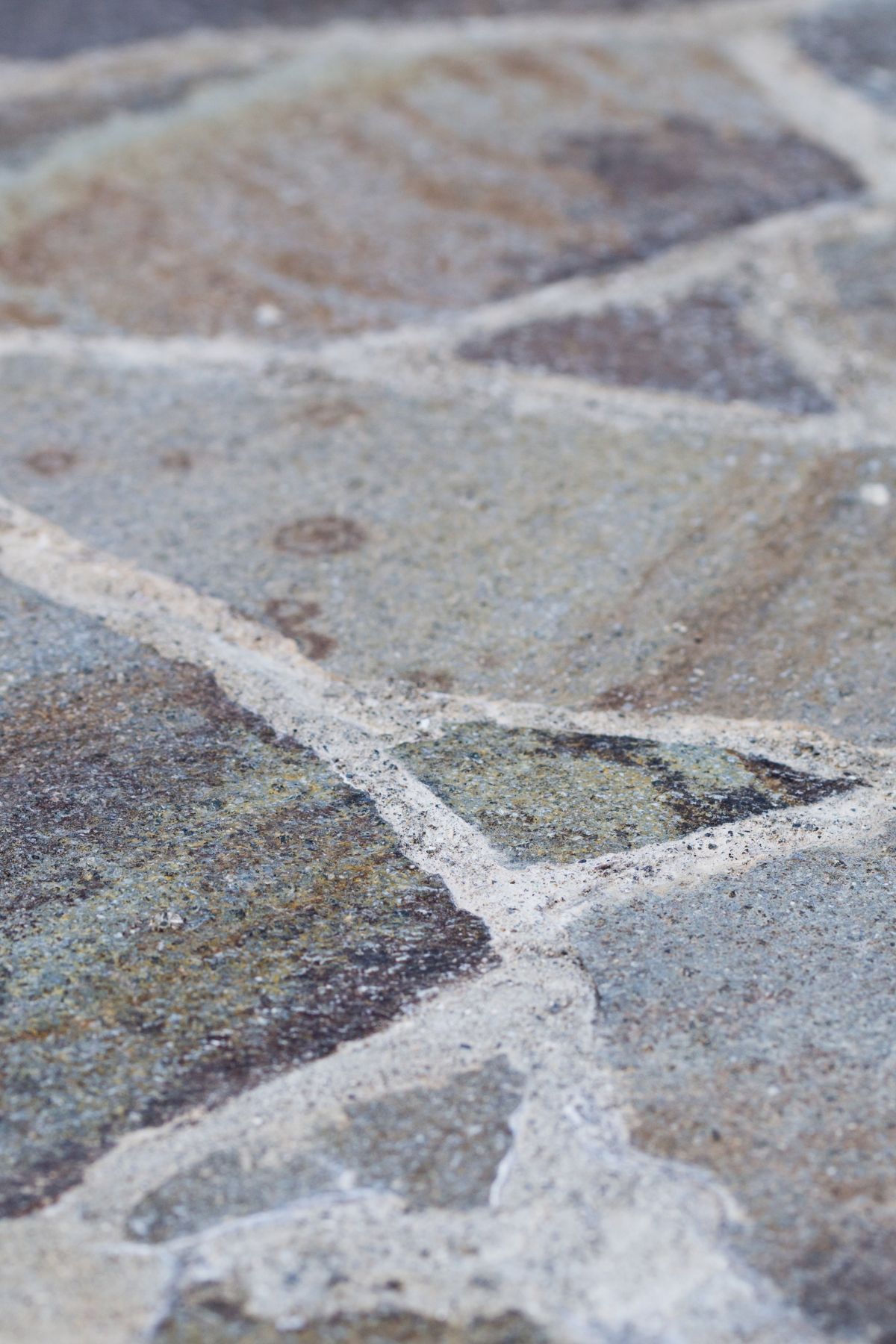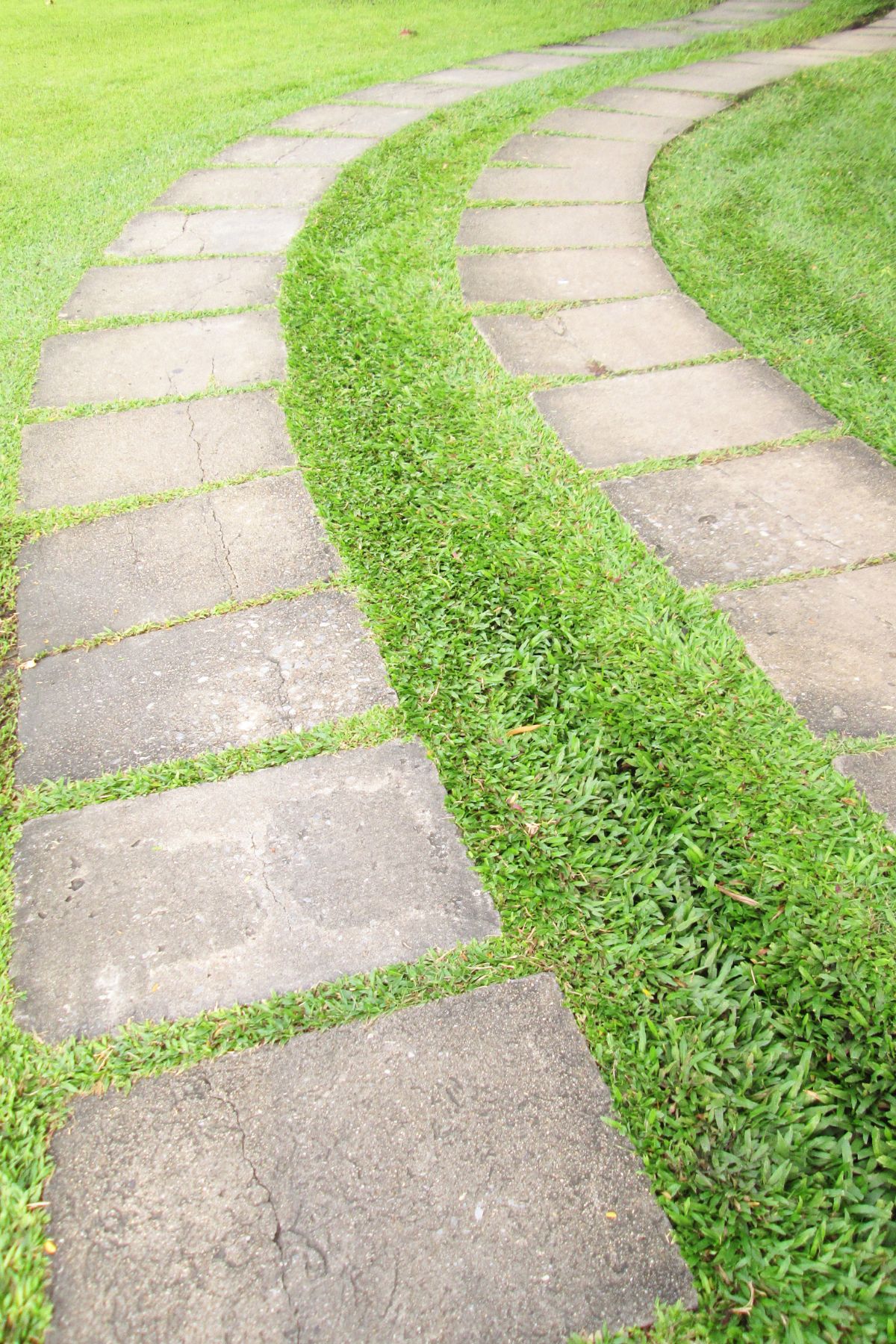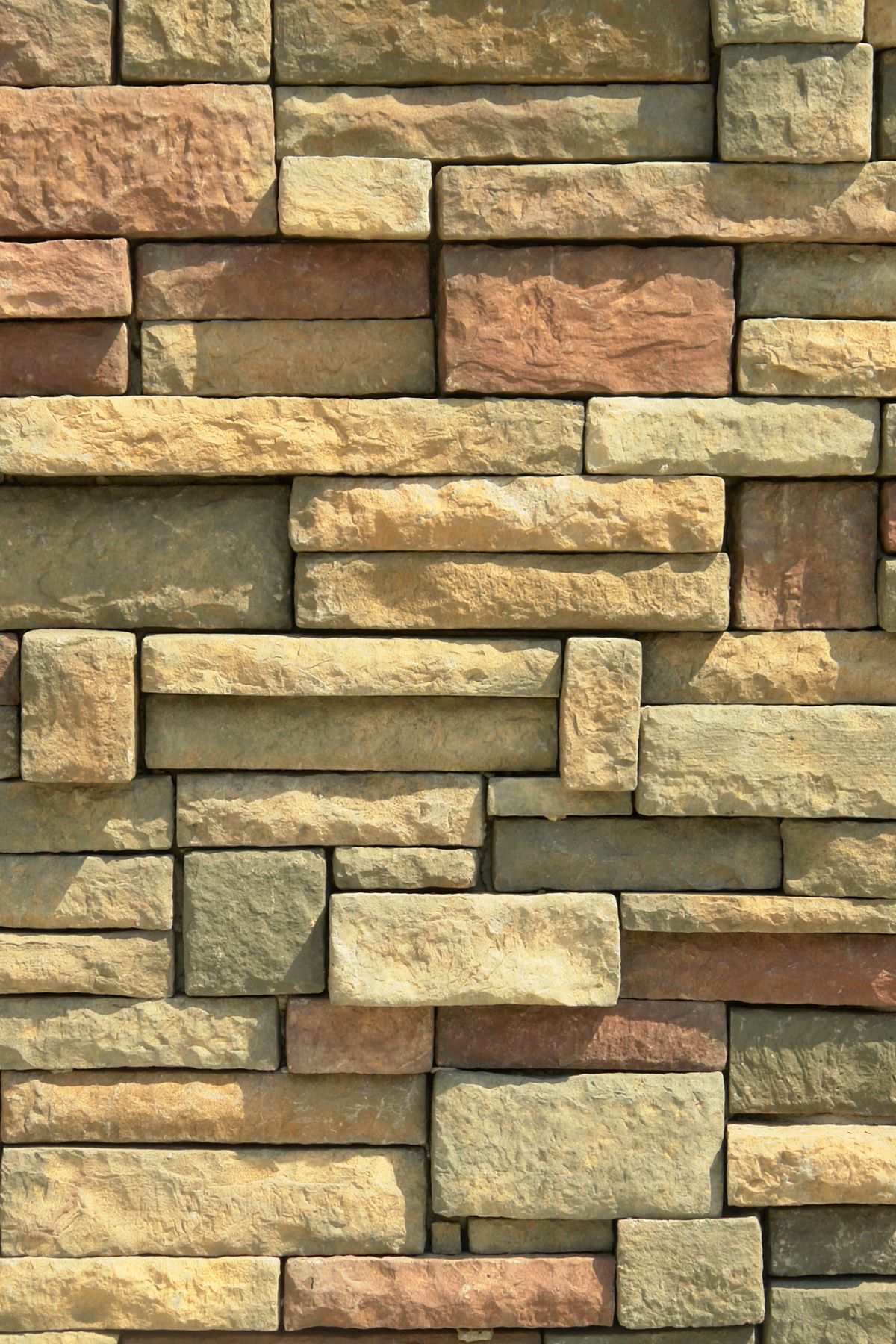A flagstone calculator is an essential tool for homeowners, landscapers, and contractors planning a hardscaping project that involves natural stone.
Flagstone Calculator
Whether you're building a patio, walkway, or garden path, this calculator helps estimate how much flagstone you'll need based on the dimensions of your project, the stone's thickness, and its density. Flagstone is typically sold by the ton, but since the weight and coverage area can vary widely depending on the type of stone used, doing the math manually can lead to costly over- or underestimations.
By using a flagstone calculator, you can eliminate the guesswork and avoid the inconvenience of returning for additional materials or dealing with excessive waste. This tool not only simplifies your planning but also ensures that your budget, timeline, and design are realistic. It’s particularly valuable when you’re working with premium or dense stones like bluestone, slate, or quartzite, where small miscalculations can make a big financial difference.
This article will guide you through everything you need to know about using a flagstone calculator effectively—from the basic principles behind how it works to the details that make your estimates more precise. You'll also learn how to select the right type of flagstone for your project and what variables to consider when estimating your material needs.

Why Accurate Estimation Matters
Using a flagstone calculator is not just a convenience—it’s a practical necessity when planning any stonework project. Flagstone is sold by weight, usually in tons, but what you're actually laying down is square footage. Without converting area to weight properly, you risk ordering too much (wasting money and materials) or too little (delaying the project while sourcing more).
Accurate estimation matters for several reasons:
- Budget Control
Flagstone can be expensive, especially high-density types like quartzite or bluestone. Miscalculating your needs can lead to unexpected costs. A flagstone calculator helps you avoid surprise expenses by giving you a solid estimate upfront. - Project Scheduling
Construction schedules often rely on material availability. If you underestimate how much stone you need, you'll face delays as you reorder and wait for deliveries. Conversely, having excess stone on-site can clutter the workspace and slow things down. - Design Consistency
Flagstones vary in color and texture by batch. Ordering all your stone at once ensures consistency across your surface. If you need to reorder later, you might get stones that don’t match the original batch. - Waste Minimization
Overbuying creates excess that may never be used. Underbuying often means cutting more stone or altering your design. A flagstone calculator reduces this waste by getting your estimate as close as possible to your actual need. - Optimized Labor
Estimating material needs helps calculate labor time and costs more accurately. Knowing how many tons of flagstone are required lets you plan crew size, transport needs, and workload more efficiently.
By integrating a flagstone calculator into your early planning phase, you’re setting your project up for greater efficiency, smoother execution, and less risk of error.
How Flagstone Is Measured and Sold
A flagstone calculator is most effective when you understand how flagstone is measured and sold in the landscaping and construction industries. Unlike tiles or bricks, which are typically sold by piece or square foot, flagstone is usually sold by the ton, due to its natural variation in shape, size, and density.
📦 Weight-Based Sales
Flagstone is commonly sold in bulk by the ton (2,000 pounds). Because different types of flagstone have different densities and thicknesses, a ton of one type may cover significantly more or less area than another. This is why using a flagstone calculator that factors in density and thickness is crucial.
📐 Coverage Estimates
Most suppliers offer approximate coverage rates (e.g., “1 ton covers 100–150 sq ft”) based on a default thickness:
- 1” thick flagstone covers about 150 sq ft/ton
- 1.5” thick covers 120–130 sq ft/ton
- 2” thick may only cover 90–100 sq ft/ton
These are general rules of thumb, not precise measures. That’s why professional calculators allow custom inputs for stone thickness and density, giving more accurate and tailored results.
🧱 Stone Shape & Packaging
- Irregular flagstone (natural edges) is often palletized loosely and sold by weight.
- Cut or dimensional flagstone (square or rectangular) may also be sold by the piece or by square footage, depending on the supplier.
- Full pallets generally weigh 1 to 1.5 tons and may include a listed “estimated coverage” based on the stone type and thickness.
Because of all this variation, relying on visual estimates or default coverage charts can be risky. A flagstone calculator, especially one that includes custom fields for density and thickness, helps bridge this gap between how flagstone is sold and how it’s actually used.
What You Need Before Using a Flagstone Calculator
Before you begin using a flagstone calculator, it’s important to gather a few key details about your project. These inputs are necessary to ensure that the calculation is accurate and tailored to your specific situation. Whether you're planning a large patio or a small garden path, these variables directly affect how much stone you’ll need.
✅ 1. Project Dimensions
- Measure the length and width of the area to be covered.
- If your space is irregular, break it into rectangles or triangles and calculate each area separately, then sum the totals.
- The result should be the total square footage of the area to be covered.
✅ 2. Desired Stone Thickness
- Typical flagstone thicknesses range from 1 inch (thin) to 2 inches (thick).
- Thicker stones are heavier and cover less area per ton.
- Consistent thickness is especially important for walkways and patios where stability and safety matter.
✅ 3. Flagstone Type
- Different types of stone (e.g., slate, sandstone, bluestone, quartzite) vary in density.
- Denser stones are heavier and cover less square footage per ton.
- If you know the stone type, a good flagstone calculator can auto-fill the typical density, or let you input a custom one.
✅ 4. Stone Density (Optional but Ideal)
- If your supplier provides the density in lb/ft³, enter this into the calculator for greater accuracy.
- Typical densities range from 140–180 lb/ft³ depending on the material.
- If density is unknown, the calculator can use a standard estimate, but the results may be less precise.
✅ 5. Wastage Factor (Optional)
- It’s common to order 5–10% extra to account for cuts, breakage, and irregular shapes.
- While not always part of the calculator logic, this can be added manually to your final estimate.
By gathering these inputs beforehand, you’ll be fully prepared to use a flagstone calculator and get a realistic, reliable estimate for your project.

Flagstone Types and Their Densities
A well-designed flagstone calculator becomes far more powerful when it takes into account the type of stone being used—because different types of flagstone have different densities. Density, measured in pounds per cubic foot (lb/ft³), determines how much a specific volume of stone weighs, which in turn affects how much area one ton of that stone can cover.
Below is a breakdown of common flagstone types and their approximate densities:
🪨 Common Flagstone Types and Their Approximate Densities
| Flagstone Type | Density (lb/ft³) | Notes |
|---|---|---|
| Slate | 160 | Fine-grained and durable; excellent for walkways and patios |
| Sandstone | 145 | Softer and more porous; available in warm earth tones |
| Limestone | 155 | Smooth texture; lighter colors; may be slippery when wet |
| Bluestone | 165 | Dense and dark blue-gray; very popular in northeastern U.S. |
| Quartzite | 170 | Extremely hard and sparkly; resists scratching and weather |
| Travertine | 150 | Textured and pitted; commonly used in warmer climates |
| Granite | 175 | Heavy and extremely hard; speckled appearance |
| Basalt | 180 | Dark and dense; used in contemporary designs |
| Marble | 165 | Luxurious and veined; less slip-resistant outdoors |
| Porphyry | 170 | Crystalline texture; popular in European paving |
| Gneiss | 165 | Banded and colorful; a metamorphic decorative stone |
| Schist | 160 | Sparkly with high mica content; decorative but flaky |
| Tennessee Flagstone | 145 | Regionally sourced sandstone with earthy hues |
| Arizona Flagstone | 140 | Light, desert-colored sandstone; soft and warm tones |
| Pennsylvania Bluestone | 165 | Premium-grade, dense stone with consistent coloring |
| Colorado Red Flagstone | 145 | Red sandstone native to the Rocky Mountain region |
How This Affects Your Estimate
If two people want to build the same 200 sq ft patio but use different flagstone types:
- One using Bluestone (165 lb/ft³) at 1.5" thickness may need ~2.5 tons
- Another using Arizona Flagstone (140 lb/ft³) at the same thickness may only need ~2.1 tons
That’s why a flagstone calculator that includes stone type and density will yield more accurate results and help prevent material shortages or waste.

How the Flagstone Calculator Works
The flagstone calculator functions by translating your project's surface area into an estimated weight of stone required, using the principles of geometry and material density. It accounts for the area to be covered, the thickness of the flagstone, and the density of the specific stone type. This process ensures that your material estimate is tailored to the unique characteristics of your project.
🧮 Step-by-Step Breakdown of the Calculation
Let’s walk through the logic a flagstone calculator typically uses:
Step 1: Calculate Area
Area (sq ft)=Length (ft)×Width (ft)
This gives the total surface area that needs to be covered with flagstone.
Step 2: Convert Thickness to Feet
Thickness (ft) = Thickness (inches) / 12
Since density is in cubic feet, we convert thickness from inches to feet.
Step 3: Compute Volume
Volume (cubic ft) = Area × Thickness (ft)
This gives the total volume of flagstone required.
Step 4: Calculate Weight
Weight (lb) = Volume × Density (lb/ft³)
Multiply the volume by the density of the stone to get the total weight needed.
Step 5: Convert to Tons
Tons Required = Weight (lb) / 2000
Since stone is sold by the ton, divide the total weight in pounds by 2,000.
Sample Calculation
Let’s say you want to cover a 15 ft × 12 ft area using Sandstone (145 lb/ft³) at 1.5 inches thick:
- Area = 15 × 12 = 180 sq ft
- Thickness = 1.5 / 12 = 0.125 ft
- Volume = 180 × 0.125 = 22.5 cubic ft
- Weight = 22.5 × 145 = 3,262.5 lb
- Tons Needed = 3,262.5 / 2000 = 1.63 tons
A flagstone calculator performs all of these calculations behind the scenes, providing you with a quick, clear estimate without needing to do the math yourself.
Tips for Buying and Laying Flagstone
While a flagstone calculator gives you a reliable estimate of how much material you need, smart purchasing and installation strategies can make the difference between a smooth project and a stressful one. Here are key tips to guide you before and during your flagstone installation.
✅ 1. Always Order a Little Extra
Even the most accurate flagstone calculator can’t account for every variable—such as on-site breakage, cuts for edges, or stones with unusable defects. To compensate:
- Add 5–10% extra to your total weight estimate.
- If you’re using irregular flagstone, go closer to 10–15% since waste is typically higher.
✅ 2. Match Stone Batches
Flagstone color and texture can vary even within the same type of stone. Try to:
- Order all flagstone from the same supplier and at the same time.
- Ask if the supplier can pull from the same quarry layer or batch to ensure visual consistency across your patio or walkway.
✅ 3. Consider Stone Shape and Layout
- Irregular flagstone creates a more organic, natural look but involves more fitting, cutting, and waste.
- Cut flagstone (e.g., rectangular or square pieces) reduces waste and speeds up installation.
- Gaps between stones affect how much surface you actually need to cover—larger joints may reduce the total square footage of stone required.
✅ 4. Check with Your Supplier
Before making your final purchase:
- Confirm density and coverage rates for the specific stone.
- Ask if pallets are sold by weight or coverage estimate.
- Find out if there’s a return policy for unused material.
✅ 5. Plan for a Proper Base
A beautiful flagstone surface is only as good as what’s underneath it. Be sure to:
- Prepare a compacted gravel base topped with a layer of sand or stone dust.
- For mortared applications, use a concrete slab with bonding agents.
- Maintain proper slopes for drainage to avoid pooling and erosion.
✅ 6. Use Tools that Support Your Workflow
Incorporate tools like:
- A flagstone calculator for accurate material planning
- A layout sketch to visualize placement and optimize cuts
- Masonry tools like chisels, spacers, and levels to ensure proper installation
Smart purchasing decisions, combined with good groundwork and planning, will help your flagstone project last for decades. When paired with a reliable flagstone calculator, these tips form the foundation of a successful outdoor installation.
Try the Flagstone Calculator
Now that you understand the importance of accurate estimation, the impact of stone density, and the variables that go into planning a successful project, it’s time to use the flagstone calculator yourself. This simple yet powerful tool eliminates guesswork and gives you an instant estimate of how many tons of flagstone you'll need for your specific project.
🧰 How to Use the Flagstone Calculator
Here’s what you’ll need to input:
- Length and Width of the area to be covered (in feet)
- Stone Thickness (in inches)
- Stone Type – choose from a dropdown or enter manually
- Density of the stone (preset based on type, but editable)
Once you enter these values, the calculator will:
- Compute your total area
- Calculate the volume of flagstone needed
- Convert that volume to weight, based on the stone’s density
- Provide the total tons required
It’s a fast, accurate way to plan your material needs—especially helpful for larger jobs or when working with custom-cut flagstone that doesn’t fit standard estimates.
Why Use This Calculator Instead of Generic Estimates?
Generic charts might say “1 ton of flagstone covers 100–150 sq ft,” but that’s a huge range. A dedicated flagstone calculator considers your actual:
- Project area
- Stone thickness
- Stone density
The result is far more accurate—which helps you:
- Buy just the right amount of stone
- Avoid multiple trips to your supplier
- Save money on unnecessary overages
Conclusion
A flagstone calculator is one of the most valuable tools you can use when planning a hardscaping project. Whether you're building a patio, walkway, or garden feature, the calculator provides a science-backed estimate of how much stone you’ll need based on your project’s square footage, your chosen stone type, its density, and its thickness. This level of accuracy helps you avoid costly overages, unexpected shortages, and time-consuming project delays.
By understanding how flagstone is measured and sold, gathering the right project inputs, and accounting for stone-specific characteristics, you can confidently approach your project with a well-informed estimate. The flagstone calculator takes the complexity out of the math and empowers homeowners, landscapers, and contractors alike to plan better, spend wisely, and deliver high-quality results.
From selecting the right material to calculating exactly how many tons you’ll need, this tool transforms planning into precision. Whether you’re working with sandstone, bluestone, slate, or quartzite, the flagstone calculator brings consistency and clarity to your workflow—ensuring your finished outdoor space is as efficient as it is beautiful.
